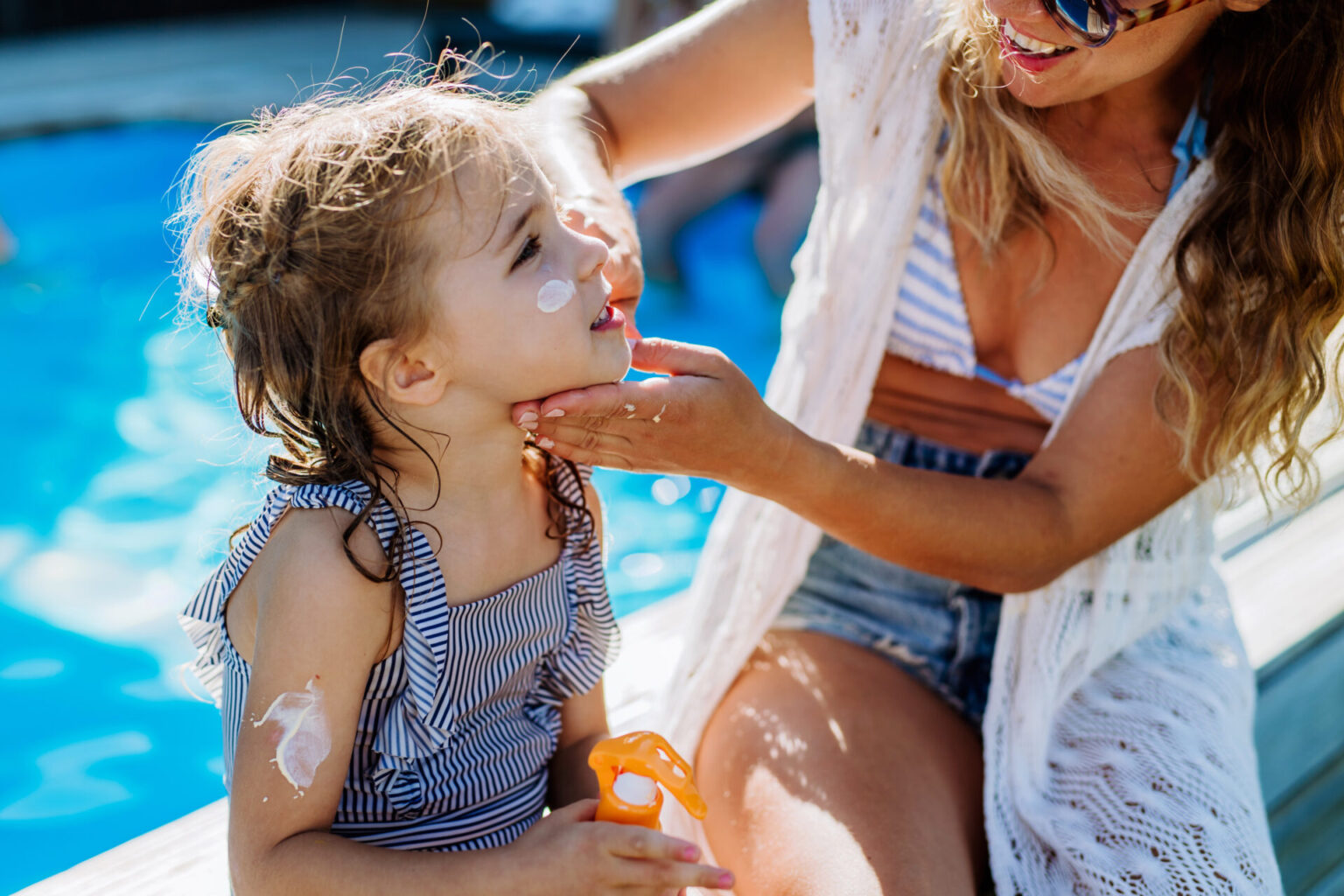We spoke to Dr. Julia Carroll, a board-certified dermatologist, to get answers to some of our most frequently asked childhood skincare questions.
Every new parent knows that the health care learning curve can be steep when it comes to your kids. With every age and stage, there are new things to consider, new challenges to address and new routines to adopt. Skincare can be a tough one, depending on your child's specific needs. That's why we spoke to board-certified dermatologist Dr. Julia Carroll, to ask some of our most frequently asked childhood skincare questions. From the best sunscreens to use for infants, toddlers and school-agers, to how parents can treat eczema and cradle cap, we've got the goods. Read on for answers from the expert.
ParentsCanada (PC): Do babies need sunscreen, what number is best and why?
Dr. Julia Carroll (JC): It’s always best to keep babies out of the sun but if needed, babies can use sunscreen. The best sunscreen is a broad-spectrum, mineral-based one with an SPF of at least 30 to protect against both UVA and UVB rays. Higher SPF numbers offer more protection, but no sunscreen can block 100 percent of UV rays.
PC: Can we apply sunscreen liberally to babies or should we tread carefully due to unknown allergies and ingredients in sunscreen?
JC: Allergies are rare. If you are concerned, you can do a test on a small area of skin. In order to get the SPF listed on the sunscreen bottle, you do need to apply liberally. For sensitive skin, opt for a mineral sunscreen.
PC: Is there a safe sunscreen for kids with eczema in Canada?
JC: For kids with eczema in Canada, finding a safe sunscreen is essential. A mineral sunscreen, like Blue Lizard Sensitive Mineral Sunscreen SPF 50+, containing contains zinc oxide and/or titanium dioxide, is ideal. Look for one that’s fragrance-free. These ingredients are less likely to irritate sensitive skin and provide effective protection.
PC: The Canadian Cancer Society recommends using a broad-spectrum sunscreen with SPF 30 or higher for all ages. What SPF sunscreen is best for children?
JC: I agree with the Canadian Cancer Society's recommendation. For children, I recommend a broad-spectrum sunscreen with SPF 50 (like Aveeno® Baby Sensitive Skin Sunscreen SPF 50 or Banana Boat Daily Protect Daily Sunscreen Lotion SPF 50+). This provides optimal protection against harmful UV rays, while also being gentle on the skin.
PC: How can we get kids to apply sunscreen themselves at school, at camp etc.?
JC: To encourage kids to apply sunscreen themselves, make it a fun and routine activity. Use colourful, kid-friendly products and teach them the importance of skin protection. Remind them to reapply every two hours, especially after swimming or sweating. Involving them in choosing their own sunscreen can also make them more interested in using it. Most importantly, parents need to model sun safe behaviour themselves.
PC: Can you explain SPF?
JC: SPF (Sun Protection Factor) measures a sunscreen's ability to block UVB rays, which cause burning. It does not address UVA radiation, which is why you need to choose a product with broad-spectrum protection. The SPF number is only accurate if enough sunscreen is applied. Most people only apply one-quarter to one-half of the amount of sunscreen that is recommended. For these people, I recommend opting for higher SPFs.
Here's a simple chart to illustrate the different levels of protection:
| SPF | Protection Level |
| SPF 15 | Blocks 93 % of the UVB rays while still allowing 7 % to reach the skin |
| SPF 30 | BLocks 97 % of the UVB rays while still allowing 3 % to reach the skin |
| SPF 50 | Blocks 98 % of the UVB rays while still allowing 2 % to reach the skin |
PC: What are the best dermatologist tips for preventing sunburns in kids?
As a Canadian dermatologist, my top tips for preventing sunburn in kids include the following:
- Use a broad-spectrum sunscreen with SPF 50.
- Apply sunscreen 15-30 minutes before going outside.
- Reapply every 2 hours or after swimming/sweating.
- Dress kids in protective clothing and hats.
- Seek shade, especially during peak sun hours.
PC: Can we ask a few non-sun related questions? For example, how can parents treat baby acne?
JC: To treat baby acne, keep the skin clean and moisturized. Use warm water and mild baby soap for cleansing, and avoid using oils or lotions that can worsen the acne. It’s also important to keep your baby’s fingernails trimmed to prevent scratching, which can lead to infection. Most baby acne will clear on its own. If the condition persists see your paediatrician or a board-certified dermatologist.
PC: Do kids need a skincare routine like adults?
JC: Kids do benefit from a skincare routine, though it’s simpler than an adult’s. A gentle cleanser and sunscreen are usually sufficient. Some children can benefit from a moisturizer. It’s important to instill good skincare habits early on but the routines do not need to be overly complicated.
PC: Can you shed like on treating eczema in toddlers?
JC: For toddlers with eczema, regular baths and moisturizing are important. Use a gentle cleanser like Aveeno® Baby Eczema Care Wash and apply a thick, fragrance-free moisturizer like Aveeno® Baby Eczema Care Moisturizing immediately after bathing. The baths should be short and lukewarm. Avoiding known irritants and keeping the skin hydrated can significantly reduce eczema flare-ups and discomfort.
PC: What can parents do about cradle cap?
JC: To manage cradle cap, parents can gently wash their baby’s scalp with a mild shampoo and use a soft brush to loosen scales. If the condition persists or is severe, a paediatrician or board-certified dermatologist may recommend a medicated shampoo or lotion. It’s important not to pick at the scales, as this can worsen the condition or cause infection.











